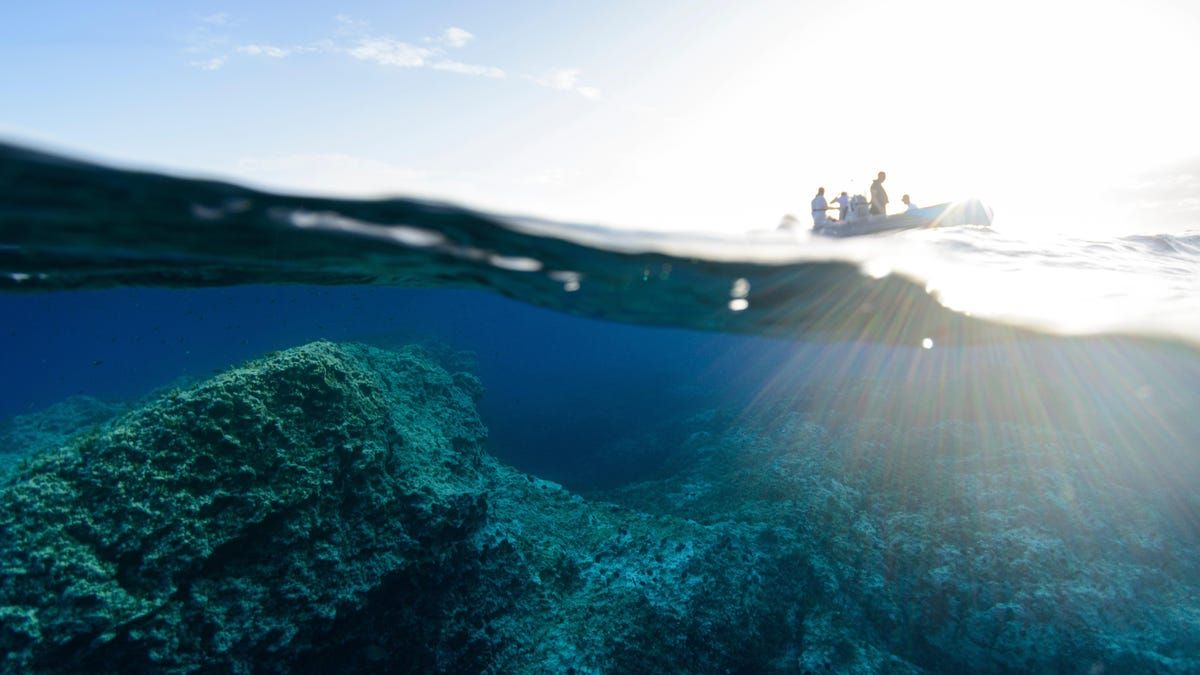Archaeologists Find 3 Shipwrecks In Mediterranean's Keith Reef
A team of archaeologists from eight nations bordering the Mediterranean Sea has come together to scrutinize shipwrecks sitting at the bottom of the water body sitting between them.
The researchers hail from Algeria, Croatia, Egypt, France, Italy, Morocco, Spain, and Tunisia, and on their recent mission, coordinated by UNESCO, they found three new shipwrecks. One wreck dates to between 100 BCE and 200 CE and two date from around the turn of the 20th century. The researchers presented their findings today in a press conference at UNESCO headquarters in Paris.
Advertisement
Using multibeam sonar and Remotely Operated Underwater Vehicles (ROVs), the archaeologists mapped the seafloor and the unfortunate vessels sitting on it. They specifically investigated the continental shelves off Tunisia and Sicily, as part of distinct projects led by Tunisia and Italy, respectively.
The newly discovered shipwrecks sit near Keith Reef, a particularly treacherous region of the Skerki Bank. The bank is bordered by Sicily to the north and Tunisia to its southwest, according to a UNESCO release. Keith Reef nearly touches the Mediterranean’s surface at points, making it difficult for ships (both ancient and modern) to navigate. Some ships clearly failed, as evidenced by the new research.
Advertisement Advertisement
The shallow reef is uniquely situated in one of the Mediterranean’s busiest maritime routes, which has been trafficked for millennia. It’s no surprise that ships have sunk there—nor that looters have found it a happy hunting ground.
Advertisement
“When we found the new ships it was a [feeling] of relief because of all the effort we have all put in and that there are still things to learn from such a heavily looted area and that there is still something to protect,” Alison Faynot, an archaeologist with UNESCO, told The National.
The investigation off Sicily followed in the footsteps of marine archaeologists Robert Ballard and Anna McCann, who located eight stranded wrecks on the Italian continental shelf between 1998 and 2000 .
Advertisement
The multibeam sonar was used to produce a photogrammetric map of the Skerki Bank and it turned up several anomalies on the seafloor which turned out to be archaeological remains.
Advertisement
Using the new research vessel Alfred Merlin, 28 scientists from the aforesaid countries found a 242-foot (74-meter) motorized wreck and a 50-foot (15-meter) wooden wreck, both dated to the late 19th or early 20th century, as well as a 50-foot merchant vessel from antiquity.
The team also scrutinized three Roman wrecks off the coast of Italy; two approximately 1st-century merchant vessels laden with amphorae, stone, ceramics, and common wares, and a 1st-century BCE cargo ship bearing similar cargo.
Advertisement
New technology is improving maritime archaeologists’ ability to image and catalog sites regardless of their depth. Last month, a different team stitched together 700,000 images of the Titanic (ever heard of it?) to produce a newly sharp 3D model of the cruise ship, which sank off Newfoundland in 1912.
Advertisement
Recent wreck-finding missions have also turned up the wreck of Ernest Shackleton’s Endurance some 9,800 feet beneath the surface of the Weddell Sea, and the upright, intact remains of the 1894 wreck Ironclad at the bottom of Lake Huron.
Arthur, the newer ROV deployed on the mission, can dive more than 8,200 feet (2,500 meters).
Advertisement
The interrogation of the Skerki Bank was the first survey mission in this zone, UNESCO officials said during the press conference. Though they did not recover any material—that was not the purpose of the scouting mission—it provides more evidence of the cultural heritage that remains preserved at the bottom of the sea, and needs to be protected.
More: World’s Oldest Intact Shipwreck Discovered at Bottom of Black Sea After 2,400 Years
Source: Gizmodo


